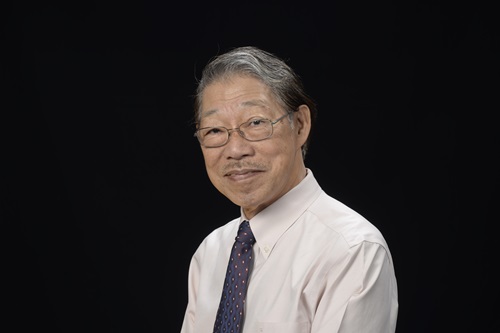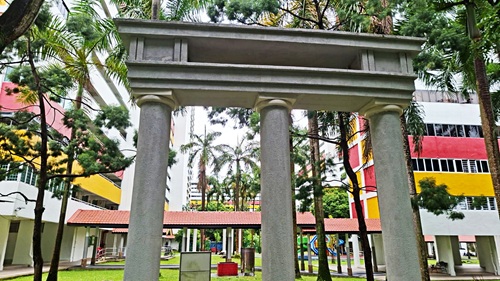我们需要新移民的参与
——访新跃社科大学学术顾问郭振羽
文·吴明珠(整理) 图·受访者提供

郭振羽
郭振羽是南洋理工大学终身荣誉教授,现任新跃社科大学学术顾问。郭教授长期关心新加坡的文化与语言的发展,曾发表多篇与这两个主题有关的文章。在有关“新华社会的发展趋势”的访谈中,他以“移民”为切入点,与《源》杂志读者分享了自己的看法。
吴:请问新加坡这20年来的移民情况是怎样的?
郭:新加坡向来是个移民的社会。由于本地人口老化而且生育率降低,政府从90年代开始大量引进外来移民。根据1980年以来的人口普查,新加坡每10年引进约一百万的外国移民,其中绝大多数是华族。而华族的外来移民中,马来西亚人数目最多,其次才是来自中国的移民。只是来自大马的移民,比较容易融入本地社会,比较不引人注意。
早期的中国移民以闽粤地区的人居多。1990年代之后的新移民主要来自闽粤以外地区,包括江苏,浙江和华北地区,语言和生活习俗差异较大。从80年代开始,每年更有不少来自中国的中学生,在陪读妈妈的伴随之下来我国就读。他们当中许多念完大学,毕业以后就在这里工作,成家并成为新加坡公民。可以说政府自90年代之后,就有系统地引进移民,其中又以来自中国大陆的移民为主。结果由于移民人数过多过快,造成人口结构失调,以至于影响到社会的安定以及2011年的大选。
吴:新加坡的华族社群有些什么变化?
郭:我国华族有多元化的特色,而语言背景是多元化的重要原因。由于教育背景的差异,早期华族社会一直有华校生和英校生的分歧。当年华校生的人数比英校生多,但是一般而言,社会地位不如英校生。两个社群在思想上明显地有差异,缺乏沟通。时至21世纪,这批华人多已年迈退休,在社会活动和经济上不再是主要的群体,这两个群体的对立差异也即将走入历史。
80年代开始英文逐渐成为工作和教育的主要语文,而且双语教育也达致相当程度的成功,华族社群内部的差异也减少了。长期而言,英语取代华语的趋势,怕是很难回转的了。
吴:新加坡的华社团体有些什么问题和契机?
郭:我们现在所了解的传统华社包括华文媒体如华文报,宗乡总会及其属下的会馆,中华总商会和各华文文化社团。其中宗乡总会成立于1986年,自成立以来,一直肩负着带动华人社会、推展华族文化的使命,同时也在民间团体和政府之间扮演着协调的角色。根据总会提供的资料,新加坡目前大约有300多间会馆,其中有226间是宗乡总会的会员,其中大多是历史悠久的老会馆,目前都面临一个问题:旧的会员老化,要吸引年轻人参加不容易。其中重要的因素是语言。现在的教育政策取向双语化。如何以适合年轻人的活动吸引他们加入会馆是华社面对的一大挑战。
新移民从90年代开始成立自己的会馆,但数目不详,总会属下有9间,分别是华源会、天府会、九龙会、陕西会馆、山西会馆、天津会、江苏会、贵州同乡会、齐鲁会。此外,还有新移民组成的同学会。以我的观察,新移民在我国的文化领域,文学团体等等个人的参与程度很深,而且表现杰出。新移民在不同领域,开始积极参与。以宗乡总会为例,我们这本总会出版的《源》杂志总编谭瑞荣先生和编辑兼记者欧雅丽小姐都是新移民。
从华文语境的立场来说这是一个好现象,我们需要新移民的参与。我这二、三十年来主持或参与不少讲座,我观察到一个现象:早期在讲座上发言的观众以年长的华校生居多,他们多少会在发问或发表意见时表现出很强烈的情绪,埋怨华校生地位低,责怪英校生消灭华文等等。现在的讲座有新移民参与,他们一般在讲座以后会提问题,参与讨论。他们喜欢发表个人的意见,对讲座的主题有个人的看法。
新移民在华族人口当中是一个很重要的群体。他们在各领域的参与肯定会增加,对本地华族文化的保留和发展将会有重要贡献。这批新移民有其文化背景、文化素养,有不少人多年来已经积极参与新加坡的文化活动,做出贡献。新加坡华族人口在50岁以上还有一批所谓的华校生,50岁以下就有了断层,而且逐年减弱。而补充接续这个断层的,正是90年代后来自中国的新移民,可以说是延续中华文化的生力军。新旧华族人口的互动和交流,未来发展会怎么样?如何融合,对华族文化长期发展会有怎样的影响?值得我们密切关注。
(作者为本刊特约记者)
WE NEED THE INVOLVEMENT OF NEW IMMIGRANTS
In this interview, Professor Eddie Kuo Chen-Yu who is currently Academic Advisor to Singapore University of Social Sciences, told Goh Beng Choo his thoughts on the trends in the development of the Chinese community in Singapore. He noted that in the 1990s, the rate of immigration increased in large numbers as a result of government policy. Among the Chinese immigrants Malaysian Chinese were the majority, followed by Mainland Chinese immigrants.
In the early years immigrants from China hailed from Southern China. Those who migrated to Singapore after 1990 came from regions other than the South such as Jiangsu, Zhejiang and Northern China. From1980s onwards batches of Chinese youths came over to continue their education and many of them completed university education, worked, settled down here and became Singapore citizens.
Singaporean Chinese is a diverse group with differences in language. In the early days the disparity between the Chinese educated Chinese and their English-educated counterparts was great, with little communication between the two camps. However, in the 21st century members of these two groups have retired and no longer occupy a significant position either socially or economically. With English as the main official and working language and the success of bilingual education, the gap between the Chinese community has closed.
The current traditional Chinese community comprises Chinese-language organisations such as the Chinese-language newspapers, Singapore Chinese Chamber of Commerce and Industry, Singapore Federation of Chinese Clan Associations and clan associations. There are 300 odd clan associations in Singapore, of which 226 are members of SFCCA. The “new immigrants” have set up their own clan associations and nine of them are members of SFCCA. However, many clan associations face a problem of recruiting young people as older members age. Prof. Kuo has noticed that new immigrants have been deeply involved in the local cultural and literary scenes and have made outstanding contributions. Both Tan Ruirong, chief editor of Yuan magazine and Ou Yali, editor cum reporter of the same magazine are new immigrants. From the perspective of Chinese language milieu, he thinks this is a good phenomenon and that their involvement and participation are important. In the numerous talks and forums he has visited or taken part in in the past 20, 30 years, he has observed that in the early years, the audiences were mainly Chinese-educated people who would stand up and vent their grouses in strong tone, whereas the current audiences are new immigrants who would raise questions and take part in discussion after the talks. They are inclined to express their personal views about the topics covered. The new immigrants are an important segment in the Chinese population of Singapore. Their involvement in various fields looks set to increase. They are significant in the preservation and development of our Chinese culture in the long run. What direction would they take and how they and the older local Chinese can achieve successful communication and fusion are concerns worthy of our attention.


.jpg)
.jpg)


